Samsung tab 4 year of release. Mobile communication technologies and data transfer speed. Information about the dimensions and weight of the device, presented in different units of measurement. Materials used, colors offered, certificates
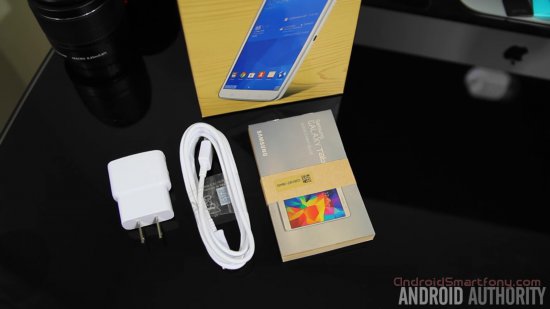
One of the most common representatives of the budget line of Samsung tablets is Samsung Galaxy Tab 4 7.0. The secret of buyers' love for this model lies in its reliability, elegant appearance and low cost. Samsung tablet price Galaxy Tab 4 7.0 when ordering it through various online stores ranges from $150–$185. Considering the fame of the Samsung brand, buying a tablet for that kind of money is simply a gift.
Appearance of Galaxy Tab 4 7.0
The Samsung Galaxy Tab 4 7.0 tablet looks like a real elite model. This effect is achieved thanks to the texture back cover resembling genuine leather. The weight of the gadget is only 276 grams, that is, the tablet is almost weightless. The dimensions look like this: 186.9 * 107.9 * 9 mm. The compactness of the device allows it to fit comfortably even in small handbags. Thanks to the smooth lines traditional for Samsung products, the tablet is pleasant to hold with your hands and use the touchscreen. The case of the Galaxy Tab 4 7.0 is made simply impeccably: there are no creaks or backlashes when using it.The color rendering quality makes 16 million shades available. The screen resolution of 1280*800 creates all the prerequisites for maximum pleasure from viewing media files. Only the 7-inch diagonal leaves a trace of dissatisfaction, but this feeling is fully compensated by the affordable price of the gadget.
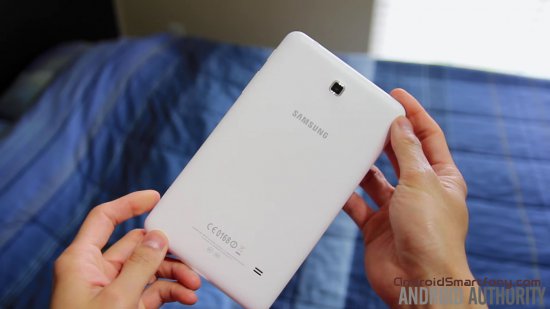

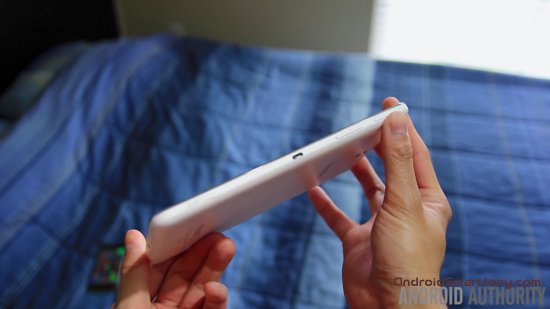
![]()
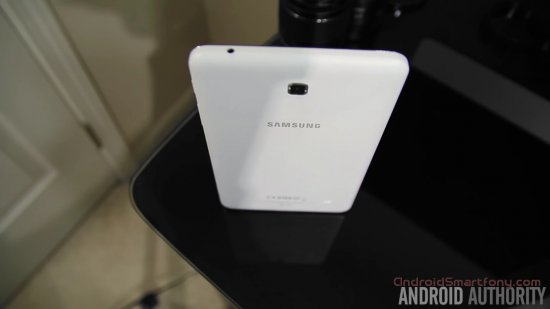
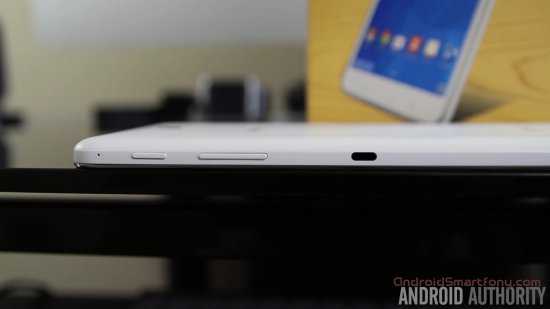
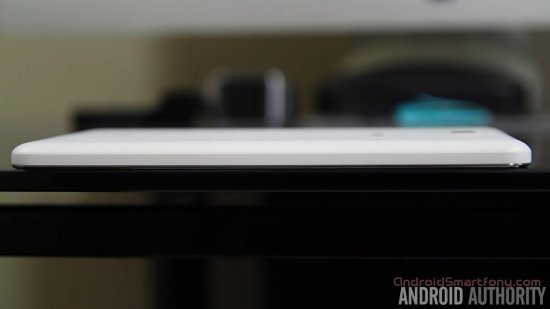
Performance
Central processing unit Galaxy device The Tab 4 7.0 is powered by a Qualcomm Snapdragon 400 processor with four cores, a clock speed of 1.2 GHz and 1.5 GB of RAM. Excellent options for a budget employee. All useful applications and popular games medium complexity work flawlessly. Surfing the Internet and watching movies is also not a problem. The tablet does not play serious games. The reason for this is not only the characteristics of the processor, but also the modest amount of internal memory - 8 GB, which does not accommodate “heavy” games, and there is no support for downloading to a memory card (this is also typical for expensive tablets Samsung). You can expand the tablet's memory using Micro SD, the maximum capacity of which can reach 32 GB.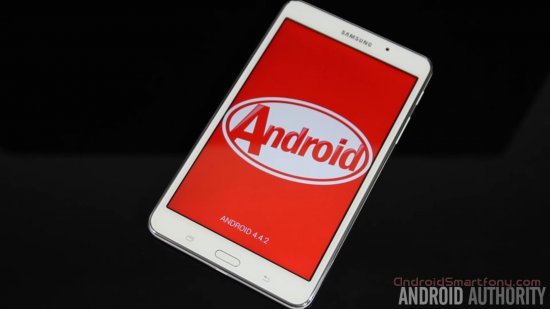
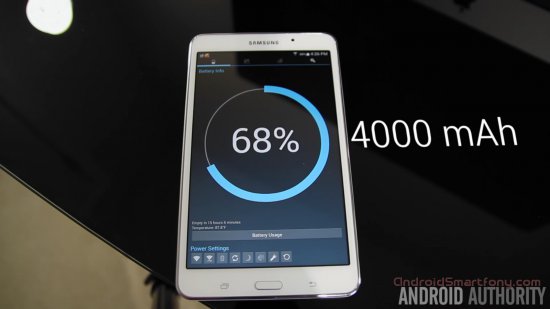


Cameras
Unfortunately, the developers have equipped the tablet with fairly average cameras: the main resolution is only 3 megapixels, the front one is 1.3 megapixels and can only provide video communication. However, the quality of the resulting images is quite satisfactory for posting them on social networking pages.

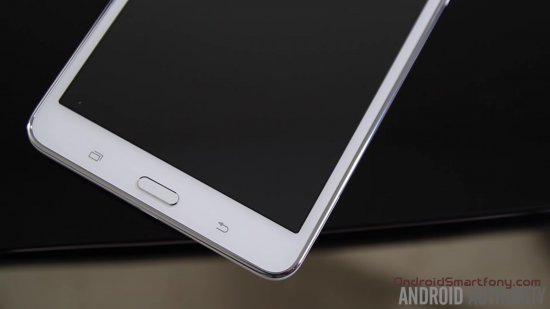
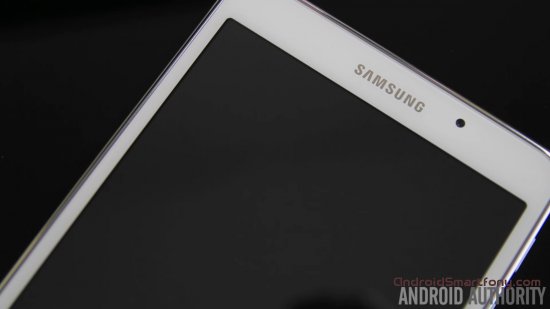
Battery
The autonomy of the tablet evokes only words of approval from many users. In standby mode, the battery life is practically not consumed, you can watch videos without interruption for up to 10 hours, you can use the Internet for the same amount of time, and you can listen to music without stopping for about 190 hours.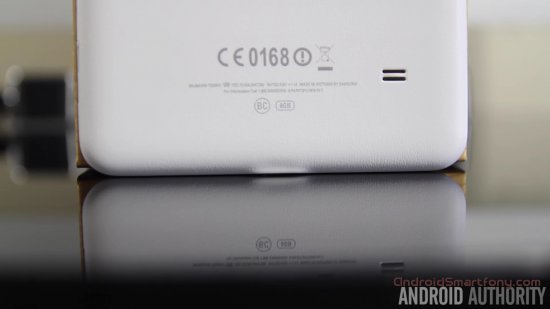
Network and wireless capabilities
To exchange information between Samsung Galaxy Tab 4 7.0 and a desktop computer or peripheral devices The tablet has Bluetooth, Wi-Fi and 3G. Thanks to the convenient service from the manufacturer Samsung Link, the tablet has easy access to other gadgets: a laptop or phone. There will be a problem with fast transfer of large files, since the device does not support the OTG protocol. Also, some users note that the Wi-Fi module is a little weak, but if there is a stable signal, difficulties in exchanging information are practically not felt.You can insert a micro-SIM card into the Galaxy Tab 4 7.0 tablet and use it as a phone. For greater convenience of making calls, you can connect headphones via a standard 3.5 mm jack. In addition, the tablet has a USB 2.0 connector and supports a GPS navigation system.
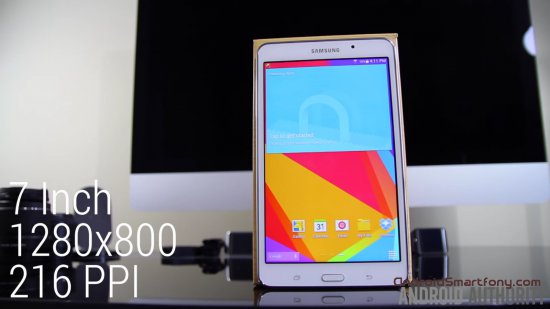
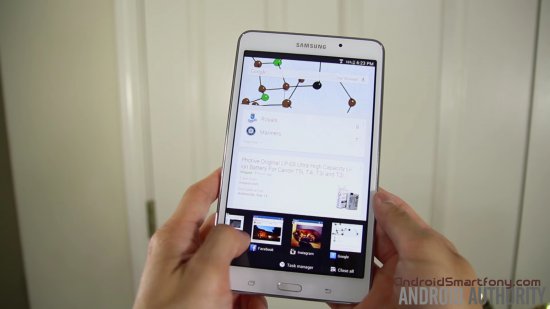
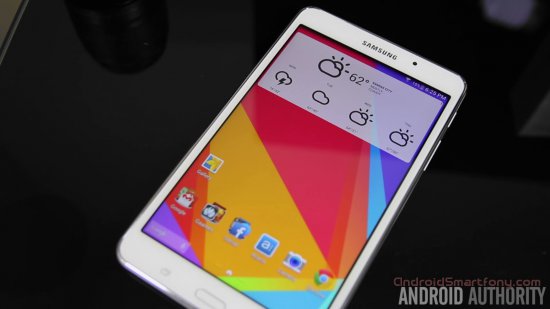
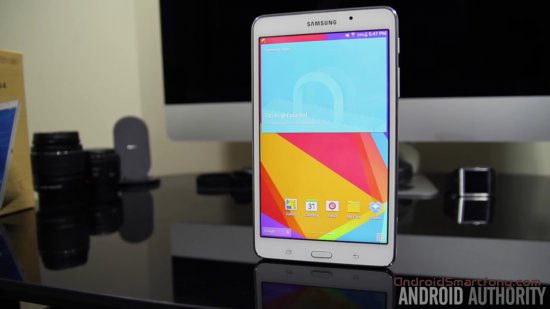

Galaxy Tab 4 Software
Tablet service Android platform 4.4, which allows for many useful additions, including the Hancom application, which allows you to edit Word documents And Excel tables. The disadvantage of the installed operating system is the impossibility of updating it to Android versions 5.0.Samsung Galaxy Tab 4 7.0 Review Summary
Samsung Galaxy Tab 4 7.0 is the most balanced tablet if we consider it from the point of view of price-quality ratio.Impeccable external design, ease of use, high performance and functionality, as well as simplicity and accessibility explain the enormous popularity of the device and encourage people to buy it.
Samsung Galaxy Tab 4 tablets have become a hot new product, and the Samsung Galaxy Tab 4 7.0, reviewed below, is the smallest and cheapest of this year's trio. It offers users a 7-inch display, a 4-core processor, one and a half gigabytes random access memory and Android KitKat with the latest interface from Samsung - all for a reasonable 10,000 rubles. The tablet seems to have potential, but what do we really have? Let's find out.
Design
The Galaxy Tab 4 7.0 looks a little boring, but that's not a big deal. Samsung, as usual, chooses plastic. That said, the Tab 4 feels pretty solid. This is a sleek, durable and well-built tablet. It doesn't squeak, has no colored spots or uneven elements that could distract you. The Tab 4 7.0 is a simple, functional tablet with a unibody design and a metal frame around the outer edge that's designed to hold the structure together and provide added rigidity. The only weak point is the somewhat wobbly Home button, but these are minor quibbles.
Measuring 186.9 x 107.9 x 9 mm and weighing 276 grams, the tablet is almost an inch narrower than the Kindle Fire HDX 7, and decidedly smaller. The tablet is also slightly smaller than its predecessor, the Galaxy Tab 3 7.0. The Tab 3 and Tab 4 share some design cues, but instead of just sleek plastic, the Tab 4 has a very robust housing, which provides better grip in the hands.
From an ergonomic point of view, the Galaxy Tab 4 7.0 is very comfortable to hold with one hand. You can place it in landscape orientation and grip it with both hands, although there's not a lot of room left for your fingers. This is a viable compromise for a thin frame.
Display
And while the 1280 x 800 pixel resolution remains average, and the 216 pixels per inch density doesn't cause shouts of admiration, the Samsung Galaxy Tab 4 7.0's display looks great in practice. A little subjective testing showed that even small details remain clearly legible. We also didn't notice any visible pixelation, although there is a hint of blurring in icons and some images with a lot of fine detail.
In terms of color reproduction, the Galaxy Tab 4 7.0 scores well, but not without its shortcomings. The screen's color temperature (7055 Kelvin) is close to the 6500K benchmark, but colors lag - in fact, the display's colors lack saturation (especially red). This way, the display won't blow you away like it does with flagship screens. Samsung tablets, however, he is quite good, nevertheless.
Let's get back to the hands-on assessment, where the 7-inch display of the Samsung Galaxy Tab 4 7.0 that we reviewed proved to be quite decent to look at, unless you're lucky enough to be exposed to direct sunlight. This is exactly the point where an overly glossy panel becomes a real problem, and the panel's maximum brightness of 374 cd is not enough to solve the problem. Luckily, the screen's viewing angles are wide enough that you have a trade-off.
Interface and functionality
We have Samsung to thank for its tablet user interface. The first time we saw the updated interface was with new Galaxy Tab Pro 12.2. We're confident that Samsung will use the interface with its new line of tablets because it's simply stunning. It provides a concise experience that is significantly friendlier standard Android, but still respects Google's efforts.
We have to point out that Samsung acted smartly and didn't try to turn a tablet designed for simple and easy tasks into something more than it is not. So you don't get fancy gesture controls or very heavy and ambitious apps, but don't be put off by this approach, you get the quality you pay for. Default applications include: Contacts, My Files, Browser, Email, Music, Video, Voice and others. You can choose which applications to use as standard and which to replace with third-party analogues.
Processor and memory
Unfortunately, these are important parameters where the new 7-inch Samsung Galaxy Tab 4 7.0 falls short of expectations. In theory, the Tab 4 7.0 has an above-average set of specs - a 4-core Marvell PXA1088 processor and 1.5 GB of RAM. In terms of internal memory, the review Samsung Galaxy Tab 4 7.0 offers only 8 GB, but in practice half is taken up by pre-installed files. Overall, everything looks good on paper, but in practice the Tab 4 7.0 can be sluggish and sometimes even unresponsive to commands. It may stutter a little in the menus and application boxes, and sometimes the sluggishness of the tablet can be overwhelming and the reason for this is the lack of RAM.
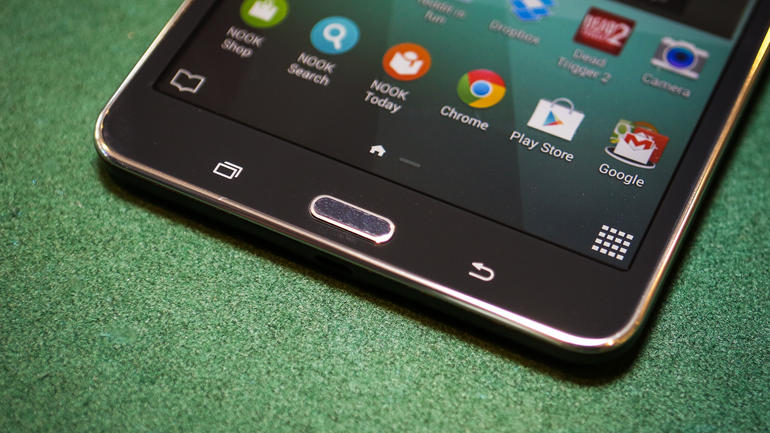
Additionally, this version of Samsung's interface doesn't have animated shortcuts, meaning they don't do anything when pressed. This way, when you use shortcuts to launch apps and the tablet doesn't respond because it's slow, you also don't get any visible indication that it actually registered your tap. Sometimes it's very annoying.
Unfortunately, the test results confirmed subjective observations, Samsung forgot to optimize the tablet or the Tab 4 7.0 is destined to remain synonymous with a weak tablet. In each of our tests, we found the tablet to be unable to compete with the Nexus 7 (2013), an older-generation tablet with an older chipset (Snapdragon S4 Pro).
The same sluggishness we observed with the Galaxy Tab 4 7.0 in practice was confirmed in synthetic tests, and we have to admit that we were disappointed with the performance of the Samsung tablet.
Cameras
The 3-megapixel main camera performs better than expected, and the 1.3-megapixel front camera is sufficient for communication.
Some of you will be pleased with Samsung's dedicated shooting modes included in the tablet. However, there isn't much choice, so don't expect anything special.
The Galaxy Tab 4 7.0's 3-megapixel fixed-focus camera is surprisingly good despite its limited capabilities. Of course, the sunny weather helped, but the photos we took were very satisfactory. Detail is quite acceptable for the size of the sensor, and the colors remain quite bright. Indoor shots suffer from noise, but the puny 3-megapixel camera still performs better than expected. Meanwhile, front-camera will be useful for video chats.
Conclusion on SamsungGalaxyTab 4 7.0
A review of the tablet showed that with an affordable price tag of 10,000 rubles, the Galaxy Tab 4 7.0 may be a great buy, but its performance leaves much to be desired. It would be too sweeping to suggest that users turn a blind eye to this device, but we are unable to promise owners smooth performance and an oily interface on this tablet. It's just not as enjoyable to use as its main competitor: the Nexus 7 (2013). Plus, at just RUB 1,500 more, the Kindle Fire HDX offers much better performance and a higher-resolution display, although it eschews Google's ecosystem in favor of Amazon instead. However, the Tab 4 is worth an upgrade over last year's Galaxy Tab 3.
I.Market
Normal model
June 11, 2015
Gritsenko Alexey
Advantages:
Case color (white)
Flaws:
Camera. Price. Short charging cord. Charging connector location. The buttons are not illuminated and are generally inconveniently located.
A comment
Galaxy Tab 3 was wonderful device. I thought that Tab 4 would be at least as good. But... The screen is darker and the viewing angles are worse. The camera is focusless, I can’t use the barcode scanner, I have to contrive holding the lens with my hands in front of the camera to...
A comment: This is my fourth tablet from Samsung. To be honest, I'm a little disappointed. Was an autofocus camera really that expensive to install? A tablet costs 16,000-18,000 rubles. in terms of performance and functions, it is no better than cheap Chinese analogues for 5-6 thousand rubles.
The Galaxy Tab 3 was a wonderful device. I thought that Tab 4 would be at least as good. But... The screen is darker and the viewing angles are worse. The camera is focusless, I can’t use the barcode scanner, I have to contrive holding the lens with my hands in front of the camera to focus. In Benchmarks, the 3D speed drops to 1fps, while the Tab3 has 12-14fps in the same test.
After updating Android to 5.02, I can’t install Samsung Link.
The button is not visible in the dark. While reading a book at night, you constantly look for them and click the wrong thing. The charger is plugged in at the bottom, lying on the sofa you have to put it upside down, and accordingly the control buttons are at the top.
I hope that the first impression is wrong, but in any case, I expected something more from Samsung. hide
I.Market
Good offer for this price
February 17, 2015
Worth Alex
Advantages:
Not a bad tablet. Nimble, everything works well. There’s more than enough for surfing and entertainment. Good and rich colors. Normal touch.
Flaws:
Short charging cord. Discharges quickly and takes a long time to charge.
A comment: Gifted for my birthday along with a bluetooth mouse and keyboard. So, I use it both as a tablet and as a netbook. In netbook mode it sometimes slows down, it’s still not such a powerful processor. But in general, it’s a normal thing.
What can please you new Samsung Galaxy Tab 4 7.0? Anything, but not a radically new design. Of course, there are still some changes, for example, to the left of the Home button there is now a recently used applications button, rather than a Menu button. The tablet has acquired a more rectangular shape compared to the Samsung Galaxy Tab 3 7.0. But the most important difference is the side frames, they have become really thin, finally on a budget inexpensive tablet. It’s also good news that the tablet has become slightly thinner and a little lighter than the Samsung Galaxy Tab 3 7.0.
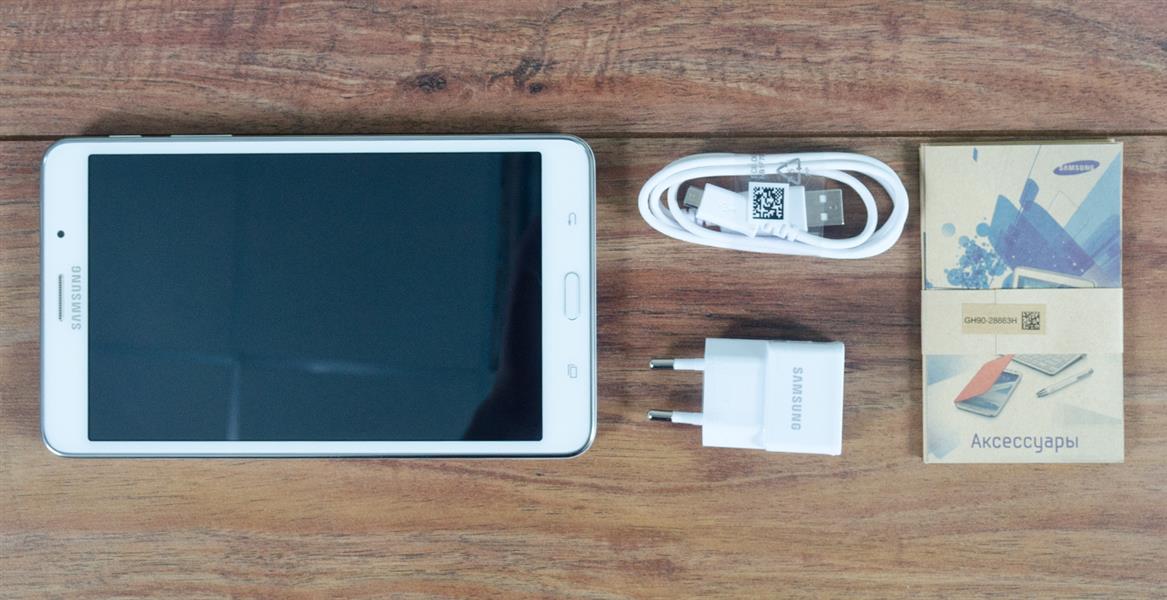
Traditionally for Samsung tablets, the device is decorated with a decorative border. Back panel made “under the skin”, like the Samsung Galaxy Tab 3 7.0 Lite and many of the company’s latest tablets. The camera lens is located in the center, but the speaker has moved to a new place and is now located on the lower back of the tablet. This is not very convenient, since the sound, for example, when watching a movie, will be somewhere far away from you.
The case of the Samsung Galaxy Tab 4 7.0 is made of plastic, the build quality of the test sample is at an average level - the case is durable, but it creaks under pressure and bends a little.
The tablet can be purchased in two colors - as always, these are white and black options.

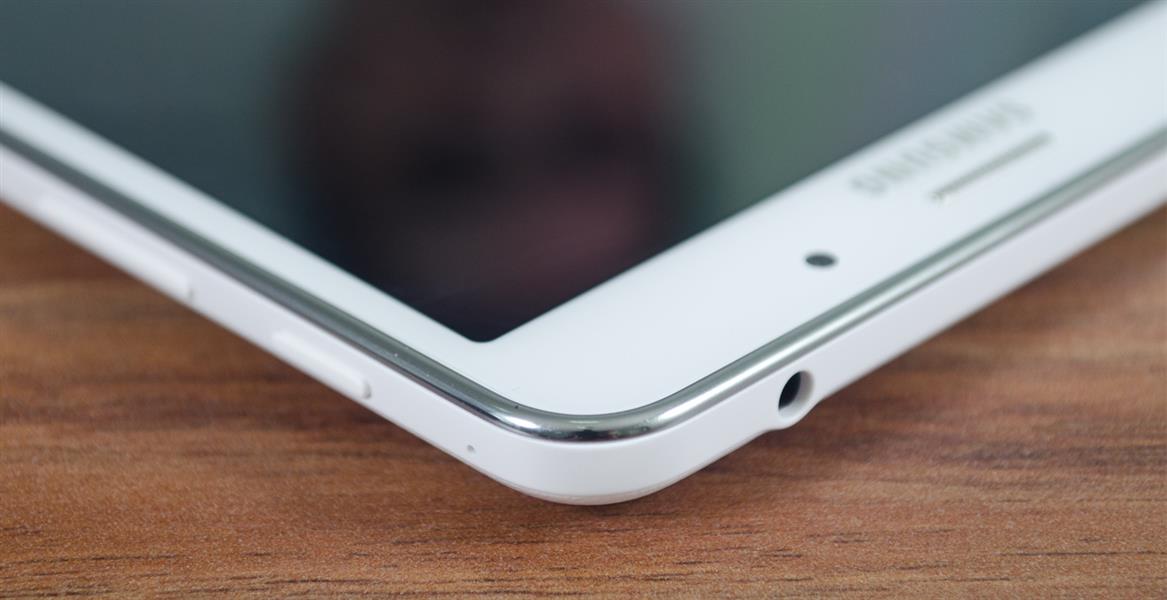
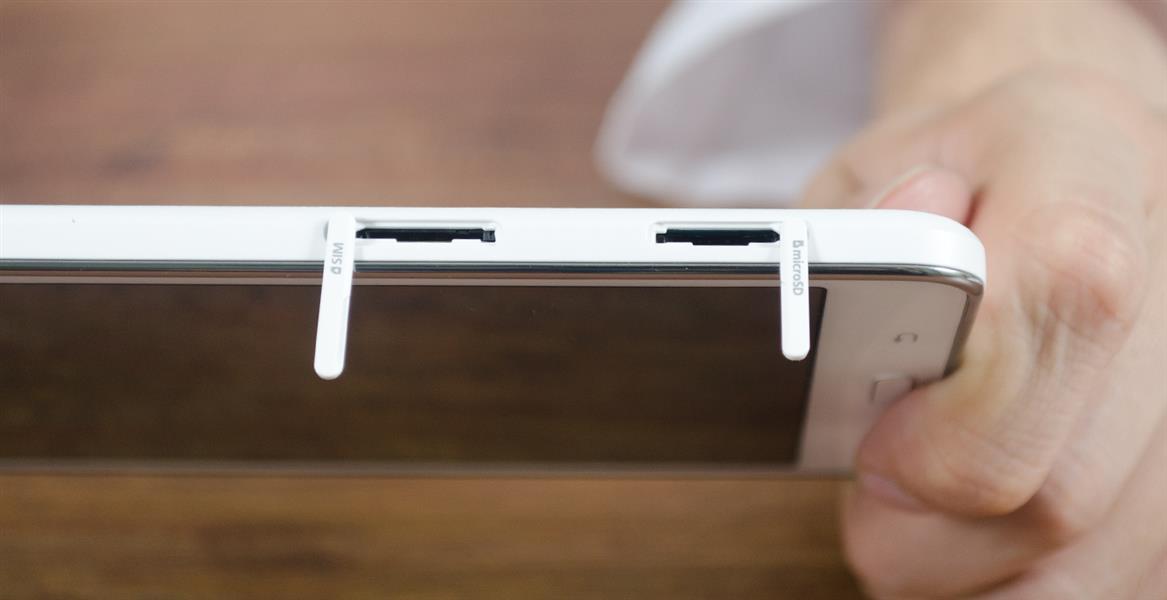
Dimensions and weight - 4.6
Due to the narrow side frames, the Samsung Galaxy Tab 4 7.0 is narrower than most 7-inch tablets, but lighter and thinner: 278 g versus 289 for the LG G Pad 7.0 and 9.4 mm thick. In our rating among 7-inch tablets, only Google Nexus 7 (2013) is thinner. In terms of dimensions, the changes are not so drastic, but they are obvious. Overall, the device fits quite comfortably in one hand.
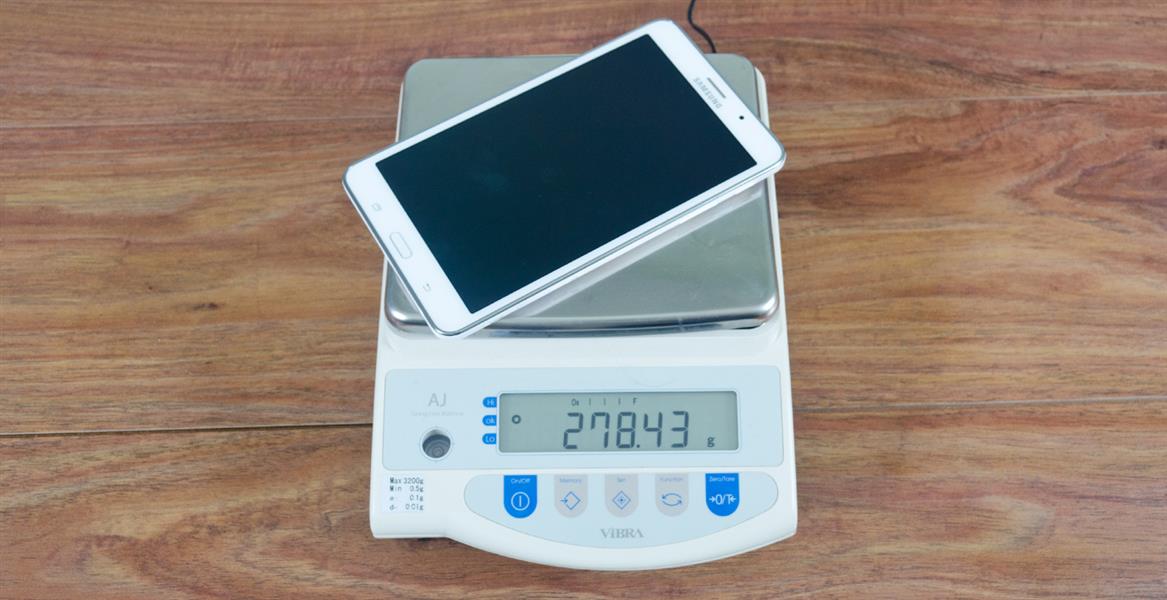
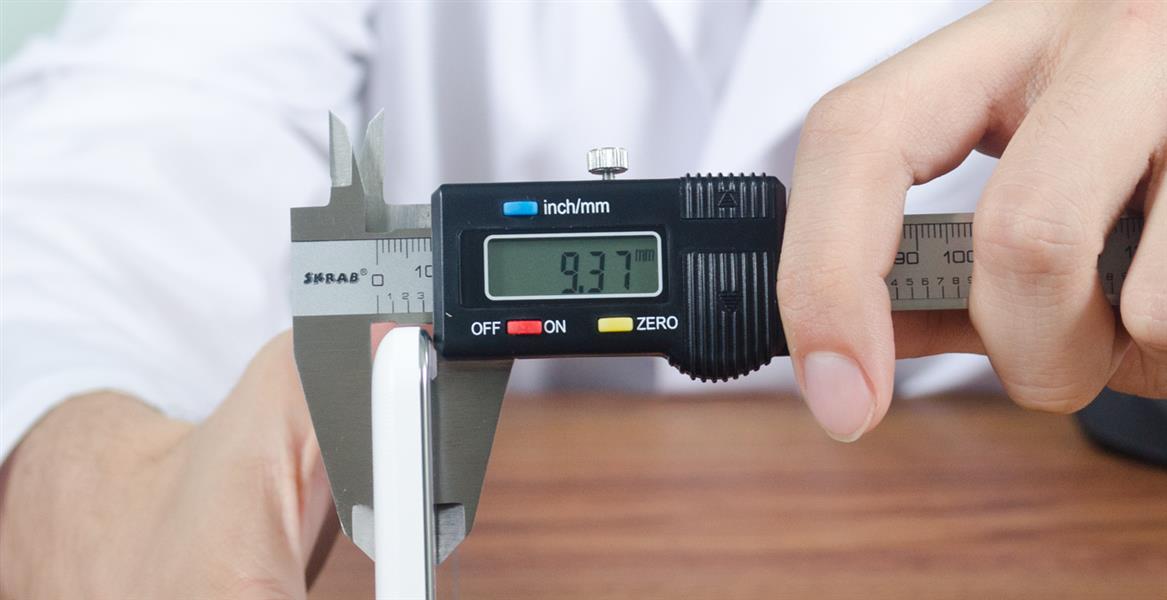
Ports and interfaces - 4.4
The Samsung Galaxy Tab 4 7.0 tablet has a standard set of connectors: the headset jack is located on the top edge, the left side is empty, and on the bottom left there are separate slots for microSD and micro-SIM cards, which are covered with plugs. Memory cards up to 32 GB are supported. A Micro-USB connector was found on the bottom edge. The set of interfaces, in our opinion, can be called good, however, thanks only to the presence of a 3G modem, for which you will need micro SIM card. There is also dual-band Wi-Fi (802.11 b/g/n), Bluetooth version 4.0 - in general, a standard set. Those who like to travel or drive through an unfamiliar city will need a GPS receiver with support for A-GPS and GLONASS. As for the modem, as is often the case with Samsung, there are three modifications: SM-T230 without a modem, SM-T231 with 3G support and SM-T235 with LTE support and an Exynos processor. However, the latter is almost never found in Russia.
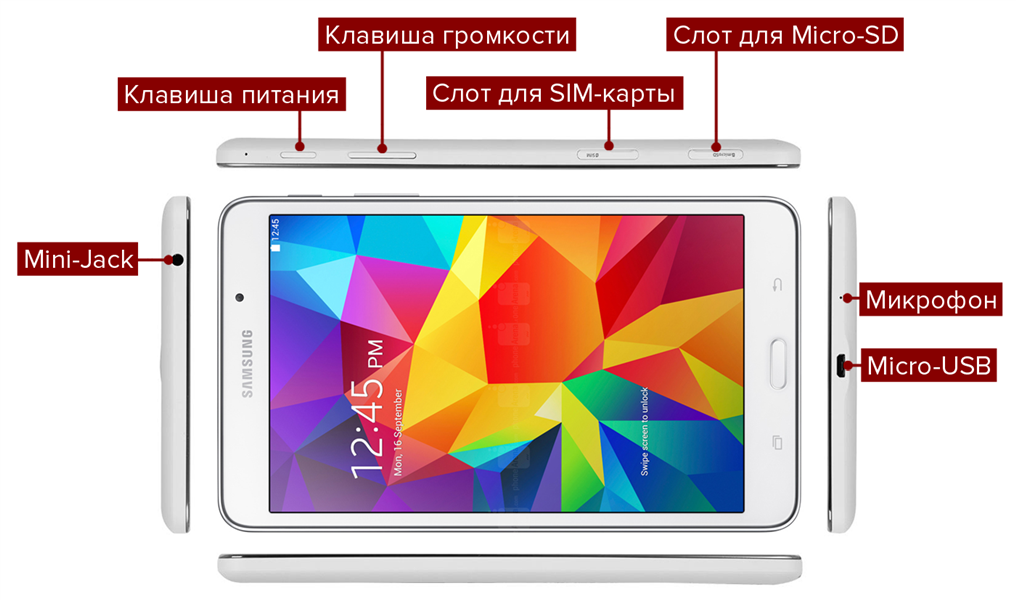
Performance - 2.0
Samsung Galaxy Tab 4 7.0 is powered by a 1.2 GHz quad-core Marvell PXA1086 processor, 1.5 GB of RAM and a Vivante GC1000 graphics accelerator. You can also order a model with a 4G modem on the Internet, which is equipped with an Exynos processor, but finding it in Russia, at least for now, is problematic. Compared to its direct predecessor, two cores and half a gigabyte of RAM were added to the processor, but one cannot say that this had a positive effect on performance: Samsung is still slow, and its results in benchmarks are unimpressive. The tablet is quite suitable for watching movies, playing simple arcade games and surfing the Internet, but even when performing such tasks it can slow down.

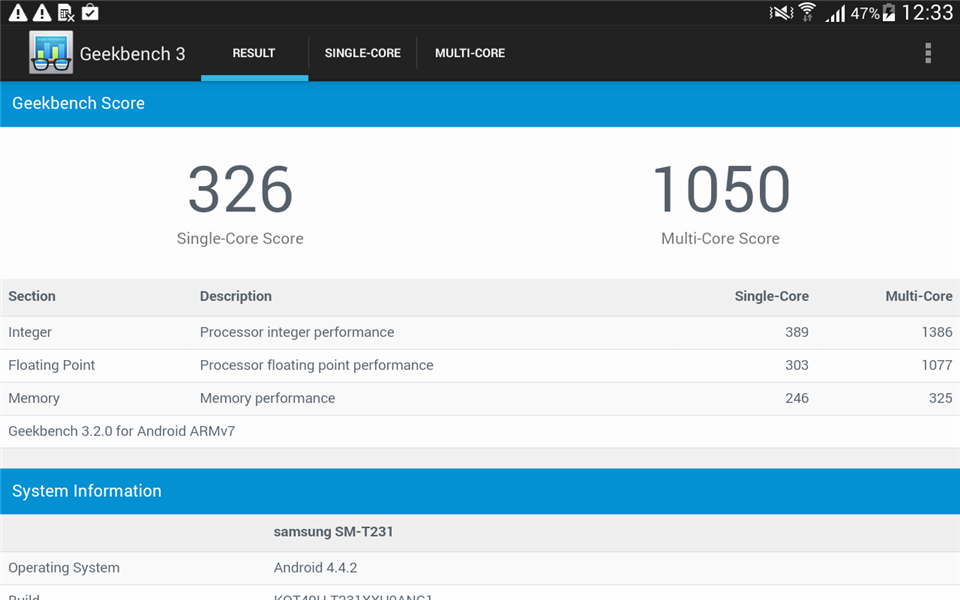
In synthetic Samsung tests Galaxy Tab 4 7.0 showed poor results, which, however, is not surprising for a budget tablet from Samsung. Our tests, each of which was carried out several times, show average values over five iterations. In the Geekbench 3 benchmark, the device showed low results - 1053 points in Multi-Core tests; the Basemark OS II benchmark was not at all willing to evaluate the tablet, which consistently “freezes” halfway through. In the SunSpider browser benchmark - 1273 milliseconds, which is quite long, at the level Acer Iconia B1-A71. In the Google Octane v2 browser benchmark, the tablet received an average of 1790 points, even lower than the Samsung Galaxy Tab 3 7.0.

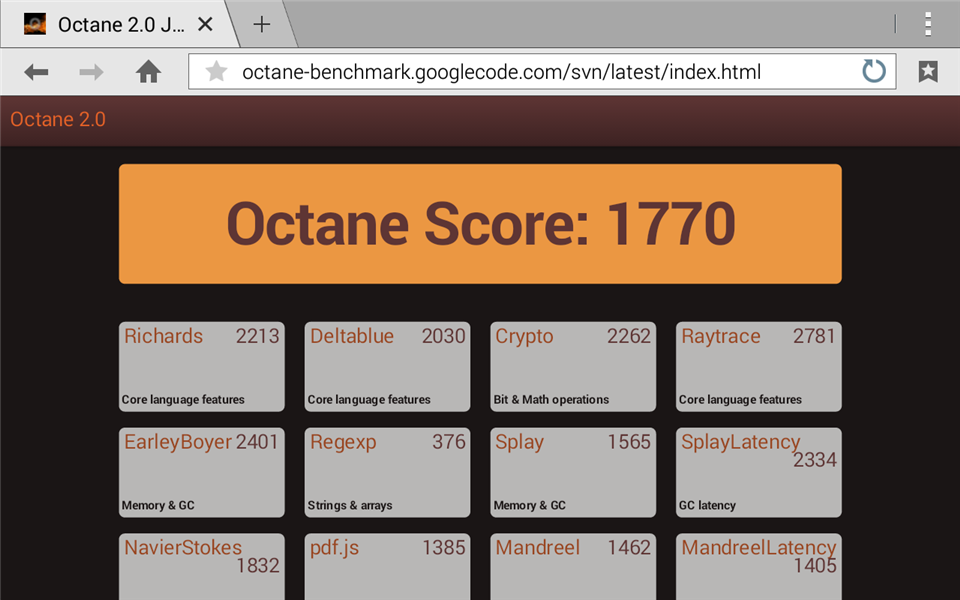
The results of the graphics chip are also not at all impressive - 3.6 fps in the T-Rex HD Offscreen test from the GFXBenchmark benchmark, the screen version refused to launch on the tablet, and in the 3DMark Ice Storm Unlimited benchmark - 2666 points, significantly lower than the results of, for example, the LG G Pad 7.0. You can only play simple games, or something heavy on minimum settings. For example, in NOVA 3 the first level loaded in only 40 seconds, but it was so slow that you wanted to quickly exit the game. Asphalt 8 looks depressing at maximum graphics, the tablet slows down even at medium settings. In general, low and very low are the limit Samsung capabilities Galaxy Tab 4 7.0. During everyday use, the tablet may occasionally slow down, but, in principle, it is not so critical, given its price.

Display - 3.8
The display of the Samsung Galaxy Tab 4 7.0 has not undergone any significant changes and remains, in our opinion, as mediocre as it was. The only interesting change is the resolution. It has increased from 1024x600 to 1280x800, which gives a slight increase in pixel density, now there are 216 per inch. All competitors have been releasing for a long time budget tablets with such a resolution, now Samsung has finally caught up with them. The screen in our tests showed good results for a 7-8-inch tablet. The display supports multi-touch, touch input is accurate, so you can type texts without any problems. In the sun, the information from the display remains more or less readable.
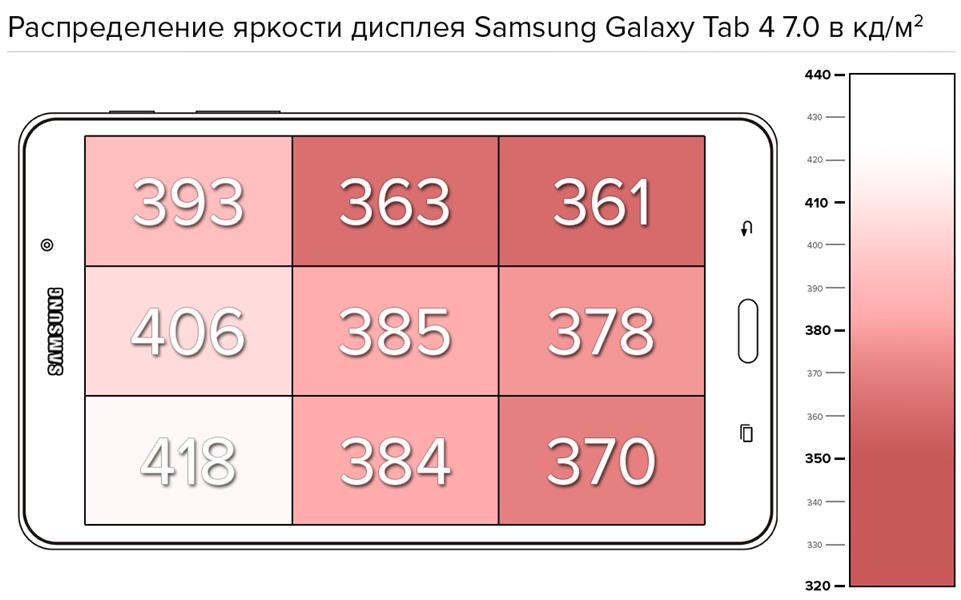
The result for the maximum measured brightness is above average - 418 cd/m2, and the brightness distribution is 86%, average, but the contrast is 556:1, worse than average. Color rendition, in our opinion, is poor, and the display’s color gamut covers about 70% of the sRGB standard and “fibs” a little with colors. The viewing angles caused us some complaints: we would like them to be wider, but in any case they are better than, for example, on the LG G Pad 7.0. The latter's display beats the Samsung Galaxy Tab 4 7.0 only in higher contrast; in other respects it is slightly inferior.
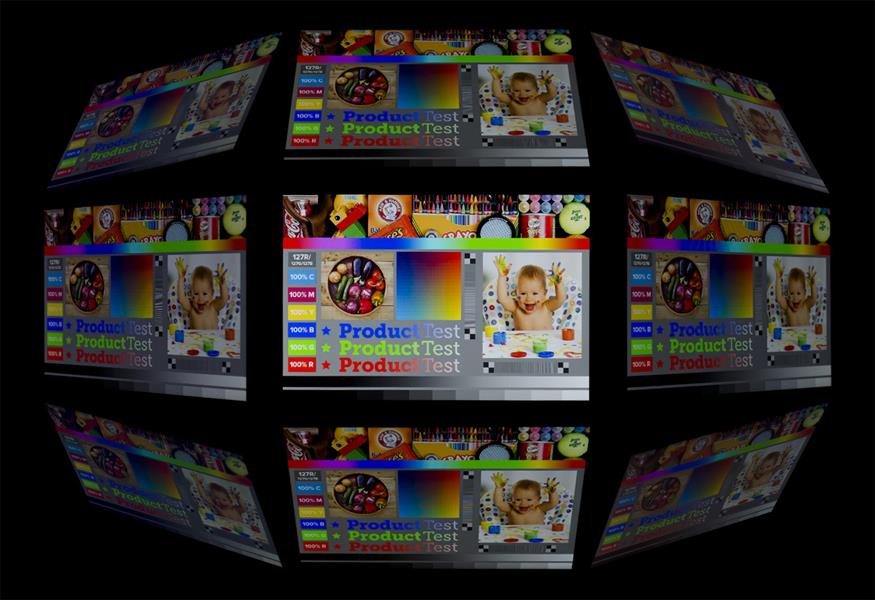
Battery - 4.8
The Samsung Galaxy Tab 4 7.0's 4000 mAh battery performed well above average in our tests. The tablet lasted an average of 5 hours 59 minutes. for three tests in load mode, 19 hours 20 minutes. - in minimum load mode and 11 hours 3 minutes. — in video viewing mode. But the tablet charges in a little longer than 4 hours, which is quite a long time. In general, the results are good, but inferior, for example, to the results of the LG G Pad 7.0.

Software
Samsung Galaxy Tab 4 7.0 runs on operating system Android 4.4.2 with the well-known TouchWiz interface. The tablet has a standard set of applications installed. Only a few points can be highlighted as unusual, for example, S Voice - voice assistant, which can search for contacts, dial calls, etc. There is also a suite of office applications, Hancom Office Viewer, for viewing documents. It can also be noted that it is standard for tablets Samsung feature smart screen, where the display remains on while someone is looking at it.

Cameras - 2.6
There are no changes in terms of cameras - the same mediocre quality. In our opinion, on the Samsung Galaxy Tab 4 7.0 they are rather for show. The 3.1 megapixel rear camera takes pictures at 2048x1536 pixels and shoots videos at 1280x720. There is no autofocus and no backlight. The front 1.3-megapixel camera shoots video at only 640x480 pixels, less than on the LG G Pad 7.0, but the Samsung Galaxy Tab 4 7.0 has some shooting modes and more settings.

Photos from camera Samsung Galaxy Tab 4 7.0 - 2.6




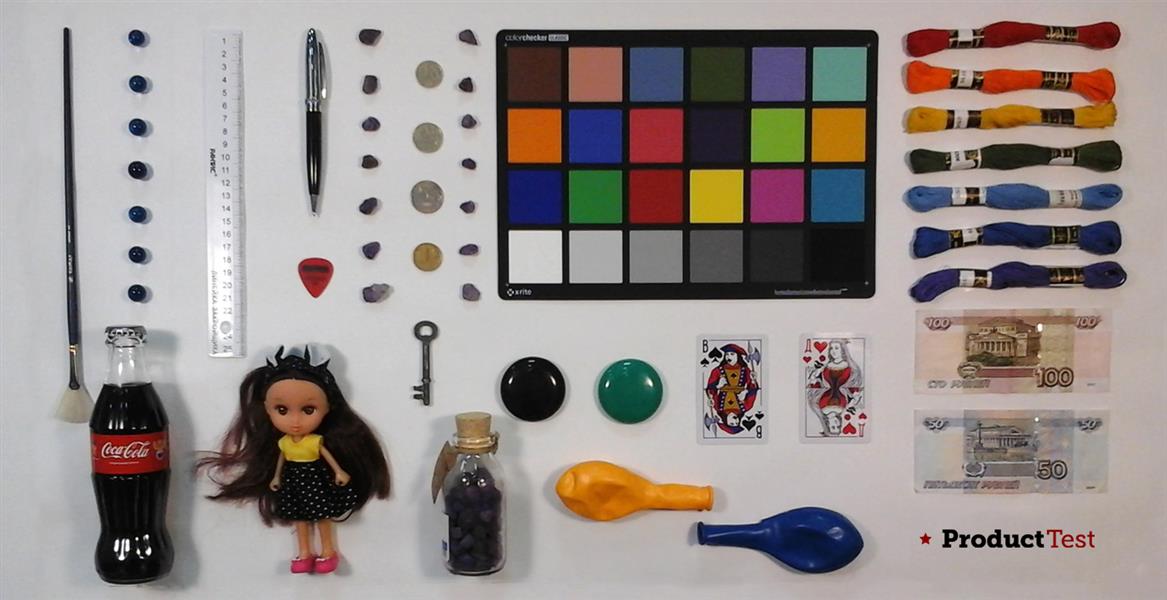
Information about the make, model, and alternative names of the specific device, if available.
Design
Information about the dimensions and weight of the device, presented in different units of measurement. Materials used, colors offered, certificates.
| Width Width information - refers to the horizontal side of the device in its standard orientation during use. | 243.4 mm (millimeters) 24.34 cm (centimeters) 0.8 ft (feet) 9.58 in (inches) |
| Height Height information - refers to the vertical side of the device in its standard orientation during use. | 176.4 mm (millimeters) 17.64 cm (centimeters) 0.58 ft (feet) 6.94 in (inches) |
| Thickness Information about the thickness of the device in different units measurements. | 7.95 mm (millimeters) 0.8 cm (centimeters) 0.03 ft (feet) 0.31 in (inches) |
| Weight Information about the weight of the device in different units of measurement. | 495 g (grams) 1.09 lbs (pounds) 17.46 oz (ounces) |
| Volume The approximate volume of the device, calculated based on the dimensions provided by the manufacturer. Refers to devices with the shape of a rectangular parallelepiped. | 341.34 cm³ (cubic centimeters) 20.73 in³ (cubic inches) |
| Colors Information about the colors in which this device is offered for sale. | Black White |
SIM card
The SIM card is used in mobile devices to store data that certifies the authenticity of mobile service subscribers.
Mobile networks
A mobile network is a radio system that allows multiple mobile devices to communicate with each other.
Mobile communication technologies and data transfer speeds
Communication between devices on mobile networks is carried out using technologies that provide different data transfer rates.
Operating system
An operating system is a system software that manages and coordinates the operation of hardware components in a device.
SoC (System on Chip)
A system on a chip (SoC) includes all the most important hardware components of a mobile device on one chip.
| SoC (System on Chip) A system on a chip (SoC) integrates various hardware components, such as a processor, graphics processor, memory, peripherals, interfaces, etc., as well as the software necessary for their operation. | Qualcomm Snapdragon 400 MSM8226 |
| Technological process Information about the technological process by which the chip is manufactured. Nanometers measure half the distance between elements in the processor. | 28 nm (nanometers) |
| Processor (CPU) The primary function of a mobile device's processor (CPU) is to interpret and execute instructions contained in software applications. | ARM Cortex-A7 |
| Processor size The size (in bits) of a processor is determined by the size (in bits) of the registers, address buses, and data buses. 64-bit processors have more high performance compared to 32-bit processors, which for their part are more productive than 16-bit processors. | 32 bit |
| Instruction Set Architecture Instructions are commands with which the software sets/controls the operation of the processor. Information about the instruction set (ISA) that the processor can execute. | ARMv7 |
| Level 1 cache (L1) Cache memory is used by the processor to reduce access time to more frequently used data and instructions. L1 (level 1) cache is small in size and works much faster than both system memory and other cache levels. If the processor does not find the requested data in L1, it continues to look for it in the L2 cache. On some processors, this search is performed simultaneously in L1 and L2. | 16 kB + 16 kB (kilobytes) |
| Level 2 cache (L2) L2 (level 2) cache memory is slower than L1, but in return it has a higher capacity, allowing caching more data. It, like L1, is much faster than system memory (RAM). If the processor does not find the requested data in L2, it continues to look for it in the L3 cache (if available) or in RAM memory. | 1024 kB (kilobytes) 1 MB (megabytes) |
| Number of processor cores The processor core executes software instructions. There are processors with one, two or more cores. Having more cores increases performance by allowing multiple instructions to be executed in parallel. | 4 |
| CPU clock speed The clock speed of a processor describes its speed in terms of cycles per second. It is measured in megahertz (MHz) or gigahertz (GHz). | 1200 MHz (megahertz) |
| Graphics Processing Unit (GPU) Graphics processing unit (GPU) handles calculations for various 2D/3D graphic applications. IN mobile devices ah it is used most often by games, consumer interface, video applications, etc. | Qualcomm Adreno 305 |
| Number of cores GPU Like a CPU, a GPU is made up of several working parts called cores. They handle graphics calculations for various applications. | 1 |
| GPU clock speed Speed of work is clock frequency GPU speed, which is measured in megahertz (MHz) or gigahertz (GHz). | 450 MHz (megahertz) |
| Amount of random access memory (RAM) Random access memory (RAM) is used by the operating system and all installed applications. Data stored in RAM is lost after the device is turned off or restarted. | 1.5 GB (gigabytes) |
Built-in memory
Each mobile device has built-in (non-removable) memory with a fixed capacity.
Memory cards
Memory cards are used in mobile devices to increase the storage capacity for storing data.
Screen
The screen of a mobile device is characterized by its technology, resolution, pixel density, diagonal length, color depth, etc.
| Type/technology One of the main characteristics of the screen is the technology by which it is made and on which the quality of the information image directly depends. | TFT |
| Diagonal For mobile devices, screen size is expressed by the length of its diagonal, measured in inches. | 10.1 in (inches) 256.54 mm (millimeters) 25.65 cm (centimeters) |
| Width Approximate screen width | 8.56 in (inches) 217.55 mm (millimeters) 21.75 cm (centimeters) |
| Height Approximate screen height | 5.35 in (inches) 135.97 mm (millimeters) 13.6 cm (centimeters) |
| Aspect Ratio The ratio of the dimensions of the long side of the screen to its short side | 1.6:1 16:10 |
| Permission Screen resolution shows the number of pixels vertically and horizontally on the screen. Higher resolution means clearer image detail. | 1280 x 800 pixels |
| Pixel Density Information about the number of pixels per centimeter or inch of the screen. Higher density allows information to be displayed on the screen with clearer detail. | 149 ppi (pixels per inch) 58ppcm (pixels per centimeter) |
| Color depth Screen color depth reflects the total number of bits used for color components in one pixel. Information about the maximum number of colors that the screen can display. | 24 bit 16777216 flowers |
| Screen area Approximate percentage of screen area occupied by the screen on the front of the device. | 69.11% (percentage) |
| Other characteristics Information about other screen features and characteristics. | Capacitive Multi-touch |
Sensors
Different sensors perform different quantitative measurements and convert physical indicators into signals that a mobile device can recognize.
Main camera
The main camera of a mobile device is usually located on the back of the body and is used for taking photos and videos.
| Sensor type Digital cameras use photo sensors to take photographs. The sensor, as well as optics, are one of the main factors in the quality of the camera in a mobile device. | CMOS (complementary metal-oxide semiconductor) |
| Image Resolution One of the main characteristics of mobile device cameras is their resolution, which shows the number of horizontal and vertical pixels in the image. | 2048 x 1536 pixels 3.15 MP (megapixels) |
| Video resolution Information about the maximum supported resolution when shooting video with the device. | 1280 x 720 pixels 0.92 MP (megapixels) |
| Video - frame rate/frames per second. Information about the maximum number of frames per second (fps) supported by the device when shooting video at the maximum resolution. Some of the main standard video shooting and playback speeds are 24p, 25p, 30p, 60p. | 30fps (frames per second) |
| Characteristics Information about other software and hardware features related to the main camera and improving its functionality. | Geographical tags Panoramic photography Scene Selection Mode |
Additional camera
Additional cameras are usually mounted above the device screen and are used mainly for video conversations, gesture recognition, etc.
Audio
Information about the type of speakers and audio technologies supported by the device.
Radio
The radio of the mobile device is a built-in FM receiver.
Location determination
Information about the navigation and location technologies supported by your device.
WiFi
Wi-Fi is a technology that provides wireless communication for transmitting data over close distances between various devices.
Bluetooth
Bluetooth is a standard for secure wireless data transfer between various devices of different types over short distances.
USB
USB (Universal Serial Bus) is an industry standard that allows different electronic devices to exchange data.
Headphone jack
This is an audio connector, also called an audio jack. The most widely used standard in mobile devices is the 3.5mm headphone jack.
Connecting devices
Information about other important connection technologies supported by your device.
Browser
A web browser is a software application for accessing and viewing information on the Internet.
| Browser Information about some of the main characteristics and standards supported by the device's browser. | HTML HTML5 CSS 3 |
Audio file formats/codecs
Mobile devices support different audio file formats and codecs, which respectively store and encode/decode digital audio data.
Video file formats/codecs
Mobile devices support different video file formats and codecs, which respectively store and encode/decode digital video data.
Battery
Mobile device batteries differ from each other in their capacity and technology. They provide the electrical charge necessary for their functioning.
| Capacity A battery's capacity indicates the maximum charge it can hold, measured in milliamp-hours. | 6800 mAh (milliamp-hours) |
| Type The type of battery is determined by its structure and, more precisely, the chemicals used. There are different types of batteries, with lithium-ion and lithium-ion polymer batteries being the most commonly used batteries in mobile devices. | Li-polymer |
| 3G talk time 3G talk time is the period of time during which the battery charge is completely discharged during a continuous conversation on a 3G network. | 46 h (hours) 2760 min (minutes) 1.9 days |
| Characteristics Information about some additional characteristics of the device's battery. | Fixed |
Specific Absorption Rate (SAR)
The SAR level refers to the amount of electromagnetic radiation absorbed by the human body while using a mobile device.
| Body SAR level (EU) The SAR level indicates maximum amount electromagnetic radiation to which the human body is exposed when holding a mobile device at hip level. The maximum permissible SAR value for mobile devices in Europe is 2 W/kg per 10 grams of human tissue. This standard established by the CENELEC committee in compliance with the ICNIRP guidelines of 1998 and IEC standards. | 0.941 W/kg (Watt per kilogram) |
| Body SAR level (US) The SAR level indicates the maximum amount of electromagnetic radiation to which the human body is exposed when holding a mobile device at hip level. The highest permissible SAR value in the USA is 1.6 W/kg per 1 gram of human tissue. This value is set by the FCC, and the CTIA monitors mobile devices' compliance with this standard. | 1.58 W/kg (Watt per kilogram) |
